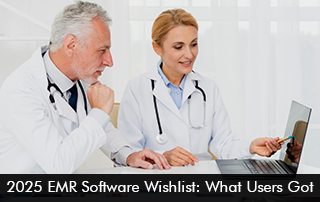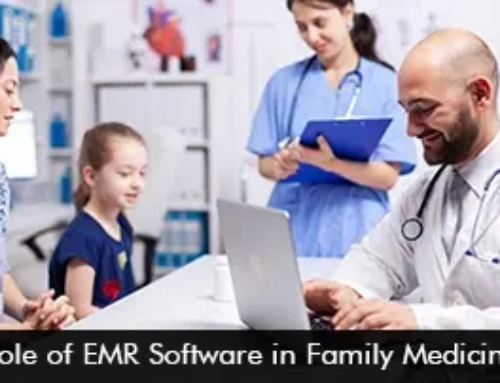When using the EMR Software System, users have certain expectations related to the technology solution they are using. In the year 2025, EHR Software users wished for certain advancements in usability and interoperability. In this blog, we will explore the wish list of users and even talk about what providers actually got out of their EMR System.
What users wished for in EMR Software?
In 2025, healthcare providers wanted enhancements in mainly three key areas in the Electronic Medical Records (EMR) Software workflow and usability, data sharing, and patient-centric functionalities.
There is already a lot of pressure on clinicians; they have to focus on their patients and even manage tedious medical billing and administrative tasks. Consumed in so much, providers want an intuitive and efficient EHR Software to complete documentation and billing tasks swiftly. Users wished for AI integration for hands-free documentation and clean software dashboards. Also, EMR Software customization tools were a priority.
Many medical practices in the US wish for robust interoperability options in their EHR systems. This can improve data sharing with labs, pharmacies, and other specialists. Over time, providers and EMR Software vendors have realized that interoperability is the framework that can enhance care delivery by reducing care gaps.
With remote care taking a spotlight post-COVID, providers wanted integration of patient-centric features that could boost patient engagement and satisfaction scores. These tools include telemedicine, a patient portal platform, and convenient mobile access.
What Providers Got in 2025 in Their EMR Software?
Modern Electronic Health Records Software (EHR) vendors have taken fruitful steps to improve EMR Systems technology by integrating the following features:
- Automation through Artificial Intelligence, Daily charting, and patient scheduling was simplified.
- FHIR standards have helped to strengthen interoperability for better care coordination between providers and support seamless data exchange.
- Cloud-based EMR Software Solutions have dominated the healthcare IT market because they offer better flexibility and are cost-effective options in these inflationary times.
- Integration of telehealth and remote patient monitoring tools in EHR Software.
- Software vendors understand that users want to spend more time with their patients and not on the EMR System. Modern software solutions are more intuitive and have options for easy workflow customization.
The Gap – What is Still Missing in EMR Software Solutions?
The progress in EHR Software is somewhere between work in progress. Interoperability has improved over the years, but the idea of perfectly smooth data flow between all different healthcare settings is still more of a goal for the future. It is good news that governments and EMR Software vendors are working towards this unanimously.
AI tools in the EHR System are getting better, but for many practices, they’re still used more as helpful additions rather than fully taking over tasks on their own. If we talk about usability improvements, customization isn’t consistent across the board – smaller clinics or specialists often notice that the features available to them are not fully developed to be utilized.
Closing remaining gaps in EMR Software can make these solutions a perfect fit. Vendors such as eClinicalWorks EMR Software and athenahealth EHR Software in 2025 have been very proactive in rolling out new tools and functionalities to improve user experience and overall healthcare delivery that can have a positive impact in 2026.








